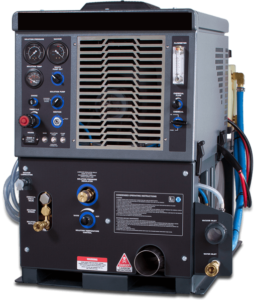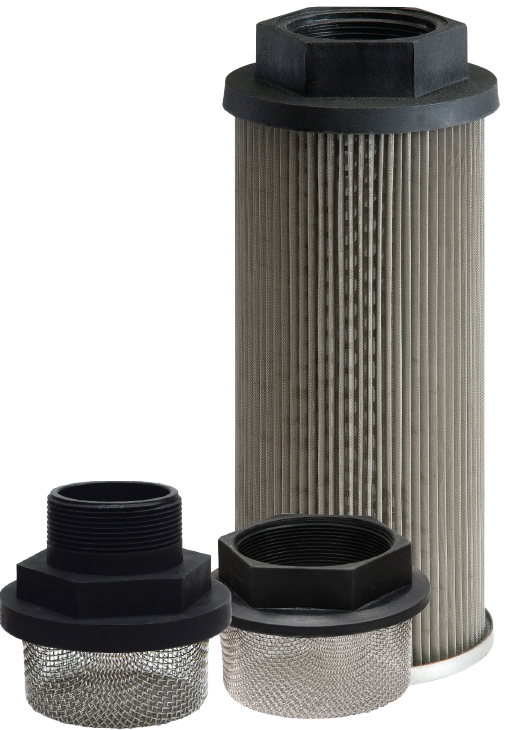a. The filter MUST be thoroughly cleaned and rinsed of any solvent that was used in the cleaning process. A lot of solvents are flammable and an important safety measure is ensuring the filter has been rinsed thoroughly before drying.
b. When using a flame, make sure you prevent it from getting near the nylon cap and epoxy. Getting the flame too close to the epoxy and nylon end cap could result in loosening the adhesive or damaging the threaded connection. Keep the flame on the metal parts of the filter only.
3. Blow it out! After a thorough cleaning, the filter is dry, and all lint has been removed, take the air hose and gently blow the filter out. Remember to always practice safety first. Be careful of others who may be in the vicinity. Blow out the filter in the opposite direction the fluid flows. In other words, the perforated core is always on the downstream side of the filter so always blow it out from inside-out. This will loosen any sediments or contaminates that still may be in the filter. When you install the clean filter in your equipment, insure it is clean as a whistle.
4. Does your equipment have a breather? Some equipment has what is called, a “breather” installed on it. In tank mounts and other equipment, as the fluid level rises and falls inside the tank, it is necessary for air to fill the void in the head space of the machine. The air enters the machine from the outside environment. The air that enters the machine is not always clean air. All breathers have a filter inside. It needs to be serviced at times, too. Don’t neglect it. If it becomes clogged, the pump and motor assembly will struggle to feed the cleaning equipment and possibly burn up. In order for equipment to work properly it needs to breathe just like you and I do.
If you are not sure if a filter needs replacing, replace it. Considering the investment made in the equipment, it is not worth the risk. Filters are inexpensive and well worth that investment. It could be much less costly to replace a filter than to attempt another cleaning with possibly a defective filter installed or one that may be past its useful life.
For the disaster recovery process, we also manufacture pipe-mounted suction screens. They have stainless steel wire cloth that is formed and epoxied into the same glass reinforced nylon connector ends as our suction strainers. Anywhere you need water or any fluid removed from an area where it shouldn’t be, these are what you will want to use with your removal equipment. They are easy to install on a hose or a pipe and are available in sizes up to 3” npt and in mesh sizes from 4 mesh to 200 mesh (74 microns).
 Cross Reference Guide
Cross Reference Guide
 Cross Reference Guide
Cross Reference Guide
